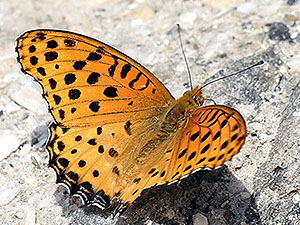Buff-breasted Buttonquail (Turnix olivii)
The Buff-breasted Buttonquail was described in 1900; it is, or maybe was, restricted to the Cape York Peninsula in Queensland, Australia.
The species reaches a size of 18 to 23 cm, as in all buttonquail species, the females are larger than the males.
The Buff-breasted Buttonquail was allegedly last seen in 2015; however, this sighting is unconfirmed; subsequent species-targeted surveys between 2018 and 2021 including things like camera trapping, call playback etc. did find all of the other Australian buttonquail species yet not this one.
The species’ population may have been affected by predation by introduced mammals, especially by feral cats, but buttonquails are also known to be highly vulnerable to climate changes due to their high climate change sensitivity and low adaptive capacity; thus it is very likely that this species is already extinct.
*********************

(public domain)
*********************
edited: 19.02.2024



